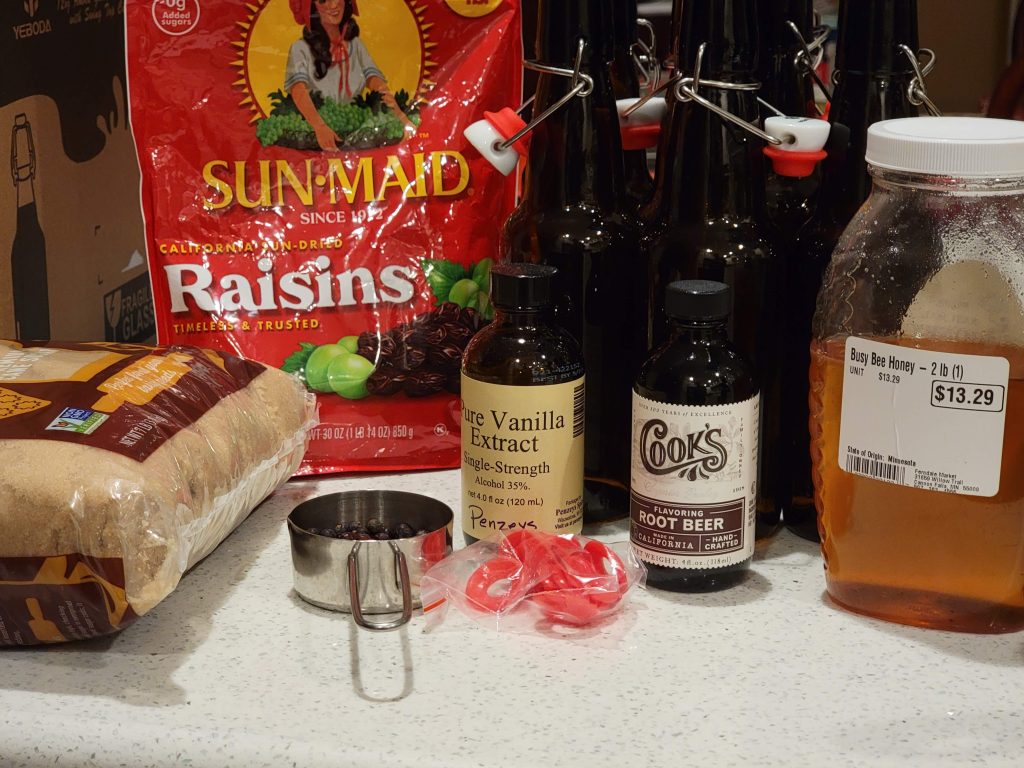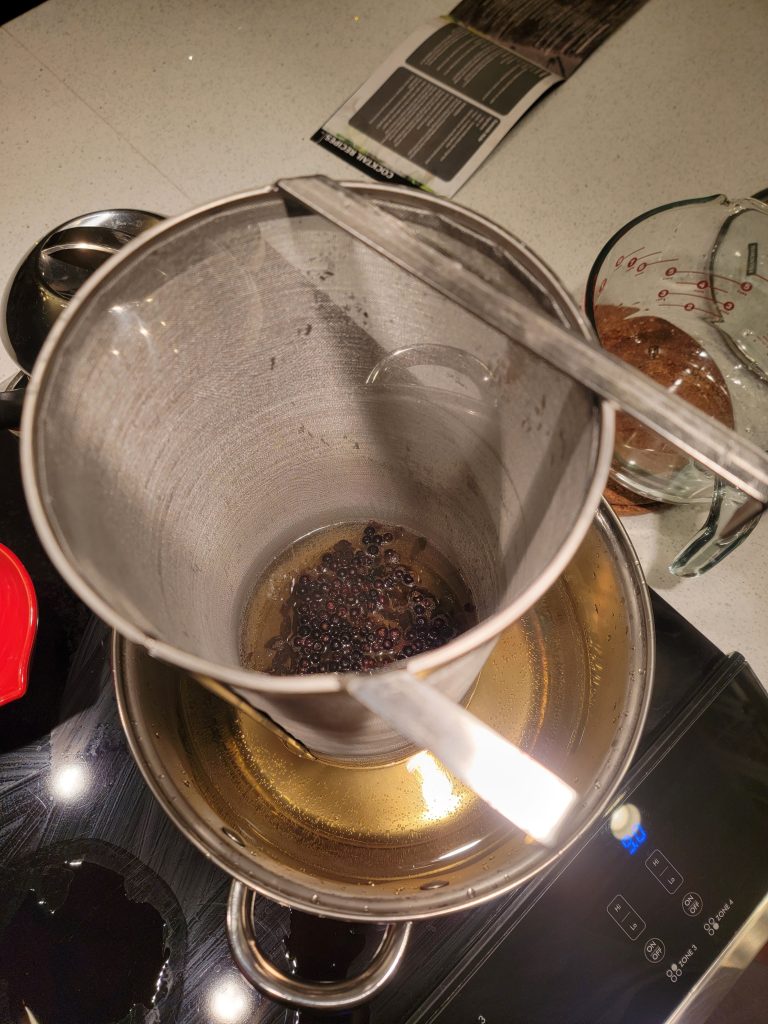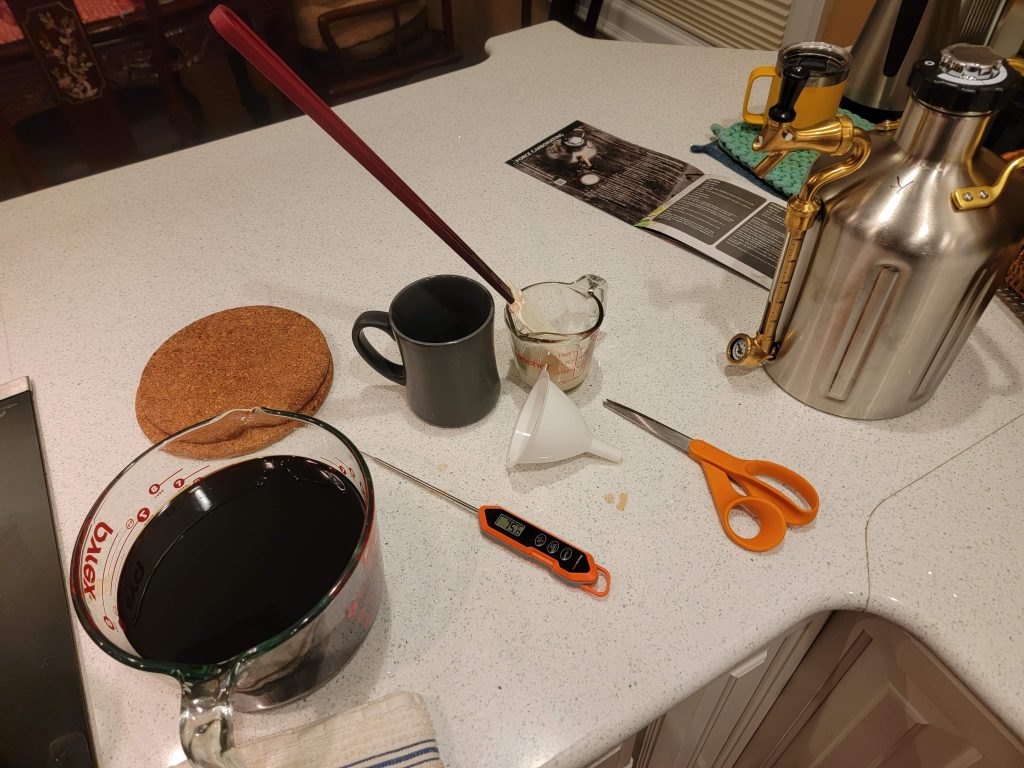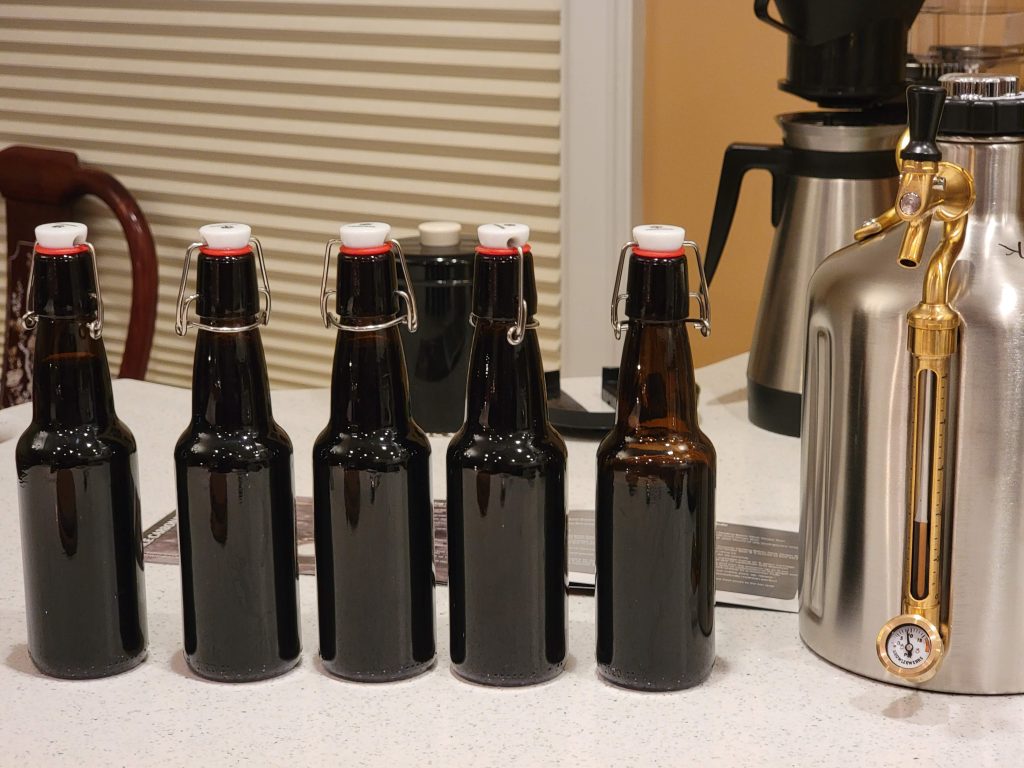Over the last several weeks, box after box has been arriving at the farm. My dad had decided to start brewing beer, in the name of testing the hops he grows. It is rather silly as no one in my family drinks alcohol. I saw a better opportunity in the pile of equipment he had received, to try something I had seen in some of my book but never actually tried before: making soda.
I started by buying a pile of more used books on making soda, of which ‘homemade soda’ by Andrew Schloss and ‘Homemade Root Beer Soda and Pop’ by Stephen Creswell I can both recommend. The recipes are all much the same: essentially make a very sweet tea and then carbonate it. Carbonation can be accomplished by yeast or by a co2 cartridge and a siphon/growler – one of the pieces of equipment that had arrived. I decided to compare both methods while attempting my first soda creation.

Root beer is the obvious soda/pop choice as it is very traditional here, tastes good, and comes in lots of subtle variations open to experimentation. It just has one problem: the primary flavoring, sassafras root, contains a possible carcinogen. There are ways to remove the guilty safrole (by chilling the ‘tea’ to near freezing and skimming off), and also plenty of people online swearing it is fine to leave in as it hasn’t killed them yet it. I decided to play it safe and use a root beer extract from Cook’s for the sassafras component, but since just using a commercial extract was too boring for me I decided to supplement with a few more flavorings of my own. I also generally errored on the side of too sweet and too flavorful, as it is easy enough to dilute the final soda with a bit more water if needed.
I really wanted to try adding burdock root, as it grows wild at the farm, but it was unfortunately all frozen under a thick layer of snow at the time of production.
Here’s the recipe I came up with, based on others:
| 3 Tbsp | Cook’s Root Beer Extract, or similar |
| 1 Tbsp | vanilla extract |
| 1/4 cup | raisins |
| 1/4 cup | juniper berries |
| 2 cups | brown sugar |
| splash | honey |
| 4 quarts | water |
| 1/8 tsp | ale yeast (if yeast carbonating) |
- Mix all roots, vegetables, and fruits in water and boil for 10+ minutes at medium high heat for the ‘tea’. Recommendations for boiling time vary widely, having thinly cut roots will be much faster than thicker cut roots, and different vegetable matters may require longer to extract flavors.
- Add liquid extracts and sugar at the end of boiling, mixing well over medium heat.
- Allow to cool to room temperature (this will take a while). This process can be accelerated by only boiling part of the water (say 2 quarts) for the tea, and then adding the remaining, cool liquid afterwards. A third option is to make a very thick syrup with only a few cups of water, and then add the carbonation as carbonated water from a bottle – this option is the only one which can be consumed immediately.
- (if using yeast carbonation) mix ale yeast in 1/4 cup slightly warm water and allow to sit 5 minutes, then mix into the cooled soda mixture. Bottle immediately leaving an inch or so space on top (just pour in to a sterile bottle with a funnel). Allow 2 – 4 days to sit at room temperature, then transfer to a fridge to slow yeast growth. I found 2 days was sufficient, but in a colder house or with different yeast longer may be required for strongest carbonation.
- (if using carbonator) add soda mix to carbonation machine per manufacturer’s instructions. After carbonation with co2 (usually a few days, refrigerated), at which point it can be consumed directly or bottled using tubing.

It seems to be that raisins are mostly used for helping to provide an amber color, as the taste wasn’t discernible. Raisins together with brown sugar would have been plenty for a nice amber color, but the end color was much darker due to the additional coloring in the extract.
So what was the surprising result of this operation? Well, for starters, that something was made which is actually tasty and something most people would want to drink. I was also surprised by how easy it was overall to make.

Perhaps the most surprising was the comparison between the yeast and co2 carbonated root beers. Both had used the exact same base soda, the only difference was yeast fermentation, but the tastes were clearly distinct. There was a yeasty taste to the yeast one, yes, but that faded after the first sip. However, it also had many more flavors as well, in particular a butterscotch flavor that was completely absent from the unfermented drink. Overall, yeast fermentation of the root beer produced a richer and more complicated beverage that – as long as you don’t mind the bit of yeast taste, is distinctly better. Thankfully there was no discernible alcohol taste, which was probably my greatest fear from the yeast fermentation.
As I was familiar with yeast bread, the yeast version was actually easier to make than using the unfamiliar co2 system, but using co2 cartridges has the advantage of allowing for longer term bottling as yeast will continue to work even refrigerated, and will eventually ‘explode’ after a few weeks in the refrigerator. Still, all methods require the product to be refrigerated.
I was curious and did some further research on the difficulty of bottling soda so that it can be stored for extended periods at room temperature. The answer: it is difficult and requires FDA certification if selling. Assured sterilization is the hard part. The familiar boiling water canning option like we do for jams might work with acidification first, but won’t work with traditional bottles, to my knowledge.

